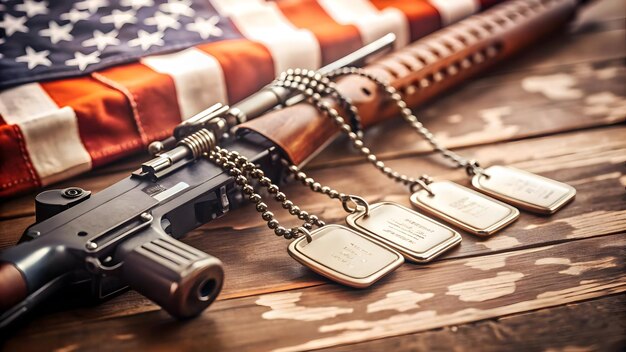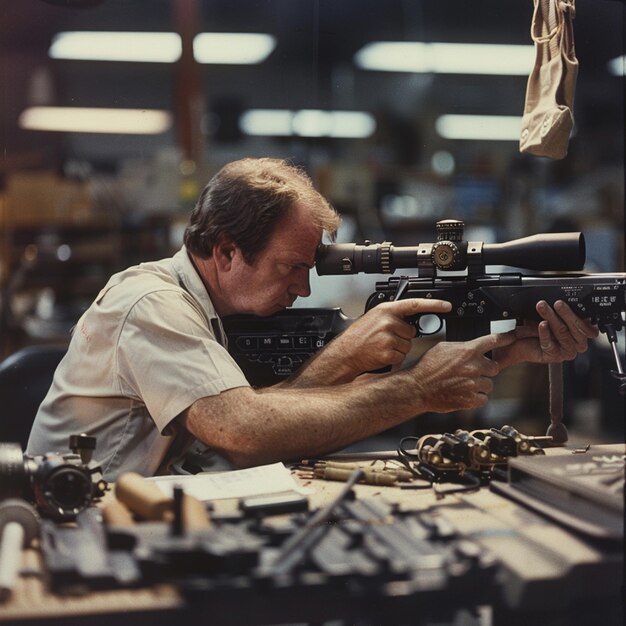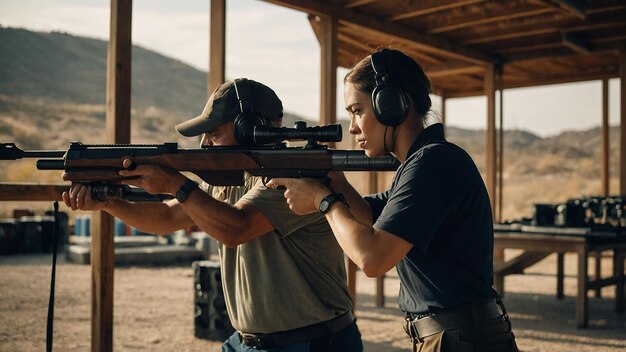Building an AR-15 in California: A Comprehensive Guide to Navigating Assault Weapons Laws – PART II
Building an AR-15 in California: A Comprehensive Guide to Navigating Assault Weapons Laws – PART II
Building an AR-15 in California can be a complex and daunting task due to the state’s strict assault weapons laws. However, with the right knowledge and resources, it is possible to build a legally compliant AR-15 within the Golden State’s boundaries. In this comprehensive guide, we will walk you through the essential steps and requirements for building an AR-15 in California.
Understanding California’s Assault Weapons Laws
Before diving into the build process, it is crucial to have a solid understanding of California’s assault weapons laws. The state defines an “assault weapon” as any centerfire semi-automatic, rifle that has the capacity to accept a detachable magazine and any of the following characteristics:
- Adjustable Stock:
- Barrel Length of less than 16 inches:
- Threaded barrels (for flash suppressors, muzzle brakes, etc.):
- Pistol grip:
- Bayonet mount:
- Flip-up or telescoping sights:
The Three Main Build Categories in California
California law allows three main categories for building AR-15s: Fixed Magazines, Featureless, and ROD (Registered Owner Device). Each category comes with its unique set of requirements.
Fixed Magazine Rifles
A fixed magazine rifle can only be built with a permanently attached, non-detachable magazine that holds no more than 10 rounds. The rifle’s other features must not meet the definition of an assault weapon.
Featureless Rifles
A featureless rifle is built without any features that are considered assault weapon characteristics under California law. This includes the absence of a pistol grip, adjustable stock, bayonet mount, and flip-up or telescoping sights.
ROD (Registered Owner Device)
A ROD is a registered owner device that allows California residents to possess certain features banned by the state’s assault weapons laws. To obtain an ROD, one must go through the Department of Justice (DOJ) registration process and pay a fee.
Building Your AR-15 in California: Steps to Follow
Once you have chosen your build category, it’s time to start gathering parts and following the necessary steps to build your AR-15 in California. Keep in mind that it is essential to follow all local, state, and federal laws while building your firearm.
Step 1: Researching and Purchasing Compliant Parts
The first step is to research and purchase parts that are compliant with California’s assault weapons laws. Make sure the parts fall under your chosen build category – fixed magazine, featureless, or ROD.
Step 2: Assembling Your AR-15
Assemble your AR-15 using the compliant parts you’ve purchased. Be sure to follow the proper assembly instructions for your specific build category and always ensure safety when handling firearms.
Step 3: Completing State Requirements
Once your AR-15 is assembled, you will need to complete any state requirements. This may include registering the firearm or obtaining an ROD if you have chosen that build category.
Step 4: Inspections and Background Checks (if applicable)
Depending on your build category, you may need to undergo inspections and background checks. These steps are essential in ensuring that you meet all California requirements for owning an AR-15.
Conclusion
Building an AR-15 in California is a complex process that requires careful planning and adherence to the state’s strict assault weapons laws. By understanding your build category, researching compliant parts, assembling the firearm, and completing any necessary requirements, you can successfully navigate California’s regulations and enjoy your legally built AR-15. Stay tuned for Part III of this comprehensive guide, where we will discuss the importance of proper storage, transportation, and transferring your AR-15 in California.

I. Introduction
California’s complex assault weapons laws have long been a subject of debate and confusion among gun enthusiasts, particularly those interested in building an AR-15 in the state. Understanding these regulations is essential to ensure compliance and avoid costly mistakes or legal issues. In Part I of this series, we delved into the basics of California’s assault weapons laws, discussing key terms, definitions, and the historical context. This foundational knowledge is crucial in navigating the specific requirements for an AR-15 build within California’s legal framework.
Recap of Part I:
Part I began by defining the term “assault weapon,” which, according to California law, is any centerfire semiautomatic rifle that can accept a detachable magazine and possesses certain features, such as a pistol grip or adjustable stock. We also discussed the differences between assault weapons, which are prohibited, and assault rifles, which are restricted but allowed under specific circumstances. Additionally, we covered the registration process for assault weapons and the importance of maintaining proper paperwork.
Importance of Knowledgeable Navigation:
Navigating California’s complex assault weapons laws requires a thorough understanding of the regulations, as well as familiarity with the legal terminology and definitions. Failure to comply with these requirements can result in fines, confiscation of firearms, or even criminal charges. Therefore, it is essential for any AR-15 builder in California to stay informed and consult reliable resources to ensure they are following the most up-to-date laws and regulations.
Understanding Features:
One crucial aspect of California’s assault weapons laws is the identification and understanding of features that may render a rifle an assault weapon. In Part II, we will dive deeper into these features, discussing their specific definitions and how they apply to AR-15 builds in California.
Stay Tuned:
Join us in Part II as we explore the various features that can make an AR-15 an assault weapon in California and discuss how builders can navigate these restrictions while still creating a functional, compliant firearm.
Important Reminder:
This information is intended for educational purposes only and should not be considered legal advice. Always consult a qualified attorney or law enforcement officer for specific questions regarding California’s assault weapons laws and AR-15 builds.

Understanding California Assault Weapon Laws (AWL)
California’s Assault Weapon Laws (AWL) aim to regulate firearms that are deemed to pose a significant public safety risk due to their high-capacity magazines and other features. Let’s delve deeper into the definition of an “assault weapon” as per California Penal Code Section 30510.
Explanation of the definition of “assault weapon” in California Penal Code Section 30510
Assault weapons are defined as:
- Semiautomatic centerfire rifles that have a detachable magazine and any one of the following:
- A pistol grip
- A folding or telescoping stock
- A thumbhole stock
- Semiautomatic centerfire pistols with a detachable magazine and any one of the following:
- A pistol grip
- An overall length of less than 12 inches
- Semiautomatic shotguns with a detachable tube or box magazine and any one of the following:
- A folding or telescoping stock
- A pistol grip that protrudes below the action of the weapon
- Specifically named firearms under California’s list
Criteria based on features (e.g., detachable magazines, pistol grip, etc.)
An assault weapon is identified by its characteristics such as:
- Detachable magazines: A magazine that can be removed without disassembling the firearm.
- Pistol grip: A handgrip designed to be held with one hand, similar to a pistol.
- Folding or telescoping stock: A stock that can be folded or extended.
- Thumbhole stock: A stock with a hole designed to accommodate the thumb.
Overview of the history and evolution of California AWLs
The California Assault Weapon Laws trace their origins back to 1989, with significant modifications in the following decades. These laws were enacted as a response to public concern over the use of military-style semiautomatic firearms in mass shootings. The regulations have undergone several revisions, reflecting societal shifts and judicial decisions.
Importance of staying updated on the regulations as they may change over time
It is crucial to remain informed about California’s Assault Weapon Laws, as they continue to evolve. Changes in these regulations can impact the legality of certain firearms or accessories, carrying potential consequences for gun owners. Always consult the latest updates from credible sources and consider seeking professional advice when necessary.

I Preparing for Your AR-15 Build in California
Building an AR-15 in California can be a complex process due to the state’s strict gun laws. Here are some steps to help ensure a successful build.
Locating a Suitable Builder or Gunsmith
Finding individuals with expertise in building California-compliant AR-15s is essential for ensuring a smooth build. Gunsmiths have the knowledge and experience to navigate the complex regulations surrounding these firearms in California.
Understanding the role of a gunsmith and their importance
A gunsmith
Their expertise is crucial in ensuring your AR-15 build meets all California requirements. They can help you source compliant parts, advise on modifications, and ensure the final product is legal for possession in the state.
Ensuring all components meet California requirements
Identifying parts that meet the definition of assault weapons under California law
is a necessary first step in your build. California’s assault weapon definitions can be complex and ever-changing, so staying informed is key.
Researching and sourcing California-compliant parts
Some common modifications that may require special attention include:
Pistol grips : Some pistol grips are considered “bulleted” under California law and can make a firearm an assault weapon if used on an AR-15.Magazine capacity : California has strict magazine capacity limits.
Finding compliant versions of these parts may require research and careful sourcing.
Understanding the legal requirements for documentation and registration
The need for a Department of Justice (DOJ) approved Form 1 or Form 4473
for the build cannot be overstated. These forms are necessary for the proper registration and transfer of your AR-15.
The need for a valid California Firearms Safety Certificate (FSC)
Possessing a valid California Firearms Safety Certificate (FSC)
is also crucial. This certificate demonstrates that you have completed the required firearm safety course and are legally permitted to possess and build firearms in California.

Building an AR-15 in California:
Following a step-by-step guide or instructional video for the build: It’s crucial to start your AR-15 building process in California with a reliable and comprehensive guide or instructional video. This step will provide you with the necessary knowledge to ensure a successful build while adhering to California’s specific regulations.
Ensuring all components are installed according to California’s AWL requirements:
- Installing a compliant stock and pistol grip: California’s Assault Weapons Control Act (AWC) establishes strict requirements for stocks and pistol grips, limiting their length and characteristics. Ensure these parts meet the regulations before installing them on your AR-15.
- Checking magazine capacity restrictions: California imposes strict restrictions on magazine capacity, limiting them to no more than 10 rounds. Make sure your magazines are compliant before use.
Properly documenting the build process:
- Maintaining a detailed record of all components used: Keep thorough documentation of every part involved in the build, including manufacturers, model numbers, and serial numbers. This information will be essential when registering your AR-15 with the DOJ.
- Keeping copies of Form 1, FSC, and other relevant paperwork: Preserve all necessary documentation throughout the build process. This includes the completed Form 1 application (for making an NFA firearm), FSC, and any other paperwork related to your AR-15 build.
Adhering to safety precautions while building the AR-15:
- Ensuring a safe and clear workspace: Clear your workspace of any distractions or potential hazards before beginning the build. This includes keeping children, pets, and flammable materials away from the work area.
- Following proper handling procedures for firearms during the build process: Always handle your AR-15 parts with care and respect, keeping them pointed in a safe direction and keeping your fingers off the trigger until you’re ready to fire.
E. Completing the final steps of the build:
- Installing a California-compliant barrel and upper receiver: Ensure the barrel and upper receiver meet the state’s requirements for length (16 inches minimum for rifles) and features.
- Ensuring all components are properly torqued: Properly tighten all screws, bolts, and other fasteners according to the manufacturer’s specifications and the torque values recommended for your AR-15 build.
F. Registering the completed AR-15 with the DOJ:
- Submitting Form 1 or Form 4473 and paying any necessary fees: Once the build is complete, submit the required paperwork (either a completed Form 1 application for an NFA firearm or Form 4473 for a standard AR-15) and pay any applicable fees to the DOJ.
- Understanding the waiting period requirements and adhering to them: Be aware of any waiting periods or background checks required for your AR-15 registration. Familiarize yourself with California’s regulations and complete all necessary steps in a timely manner.
G. Obtaining a California Firearms Safety Certificate (FSC) if you don’t already have one:
If you haven’t previously obtained a California Firearms Safety Certificate (FSC), be sure to complete this step before attempting an AR-15 build. The FSC demonstrates your understanding of firearm safety and California gun laws.

Conclusion
Building an AR-15 in California comes with unique challenges due to the state’s stringent assault weapon laws. Understanding and navigating these regulations is crucial for any prospective builder, as failure to comply can result in serious legal consequences. It’s essential to stay informed and up-to-date on any changes or updates to these laws.
Find Qualified Builders
One effective strategy for ensuring compliance is by hiring a qualified builder. A professional with experience in building AR-15s within the California legal framework can help you avoid costly mistakes and ensure your weapon is both functional and lawful.
Stay Informed
Staying informed on regulations is an ongoing process. Regularly checking the California Department of Justice’s website and subscribing to relevant gun rights organizations can provide valuable insights into any changes that may impact your build.
Responsible Gun Ownership
Once your AR-15 is complete, responsible gun ownership and adherence to safety protocols are essential. Maintaining a secure storage area for your firearm, keeping it unloaded until ready to use, and ensuring that all users are properly trained can significantly reduce the risks associated with gun ownership.
Join Local Gun Clubs or Organizations
Consider joining local gun clubs or organizations
for additional support and resources. These groups often have experienced members who can offer advice on navigating California’s complex regulations, as well as opportunities to learn from one another and develop a network of like-minded individuals. Remember that the process of building an AR-15 in California may be complex, but with proper knowledge, preparation, and support, it can be a rewarding experience.

